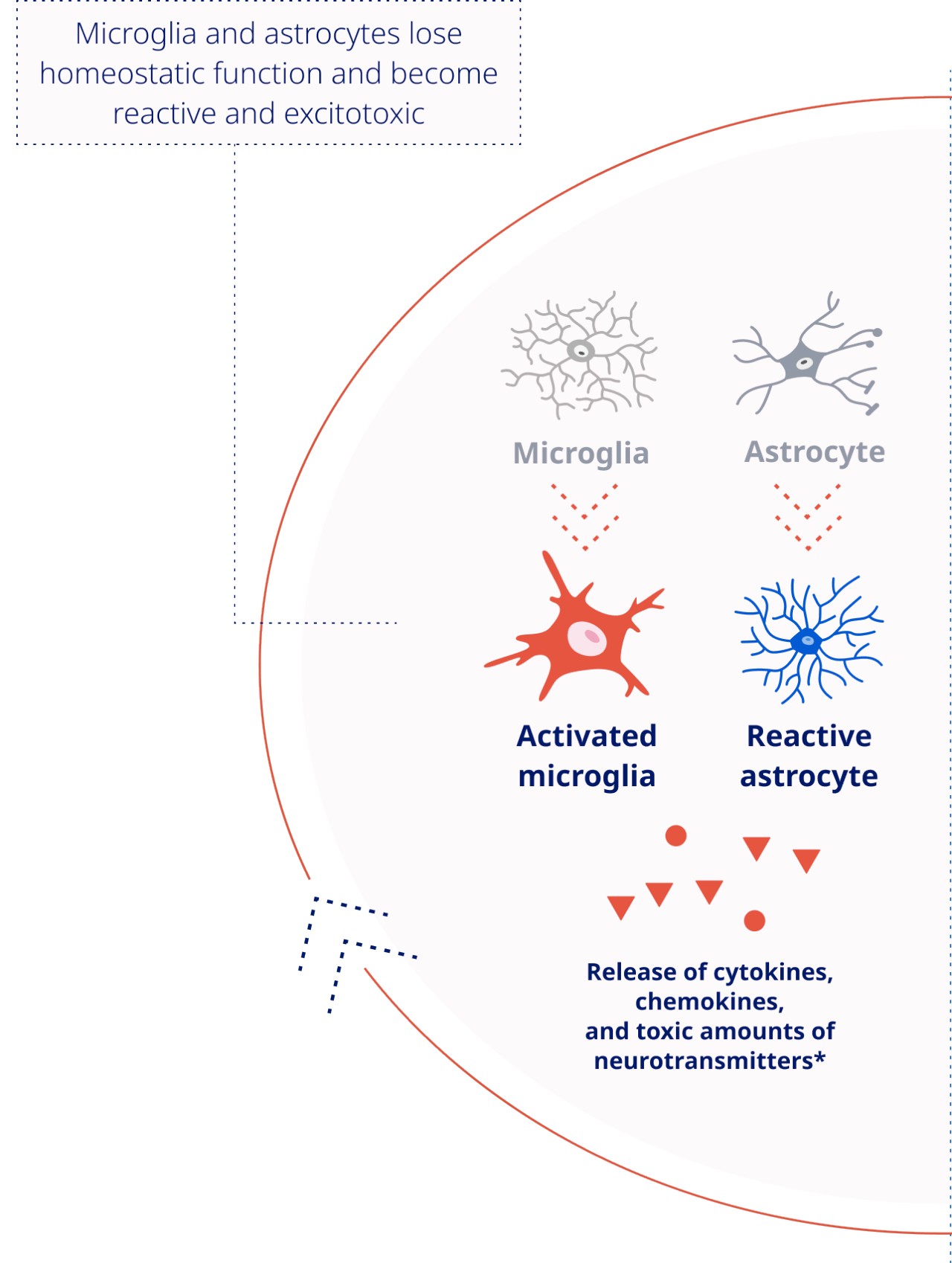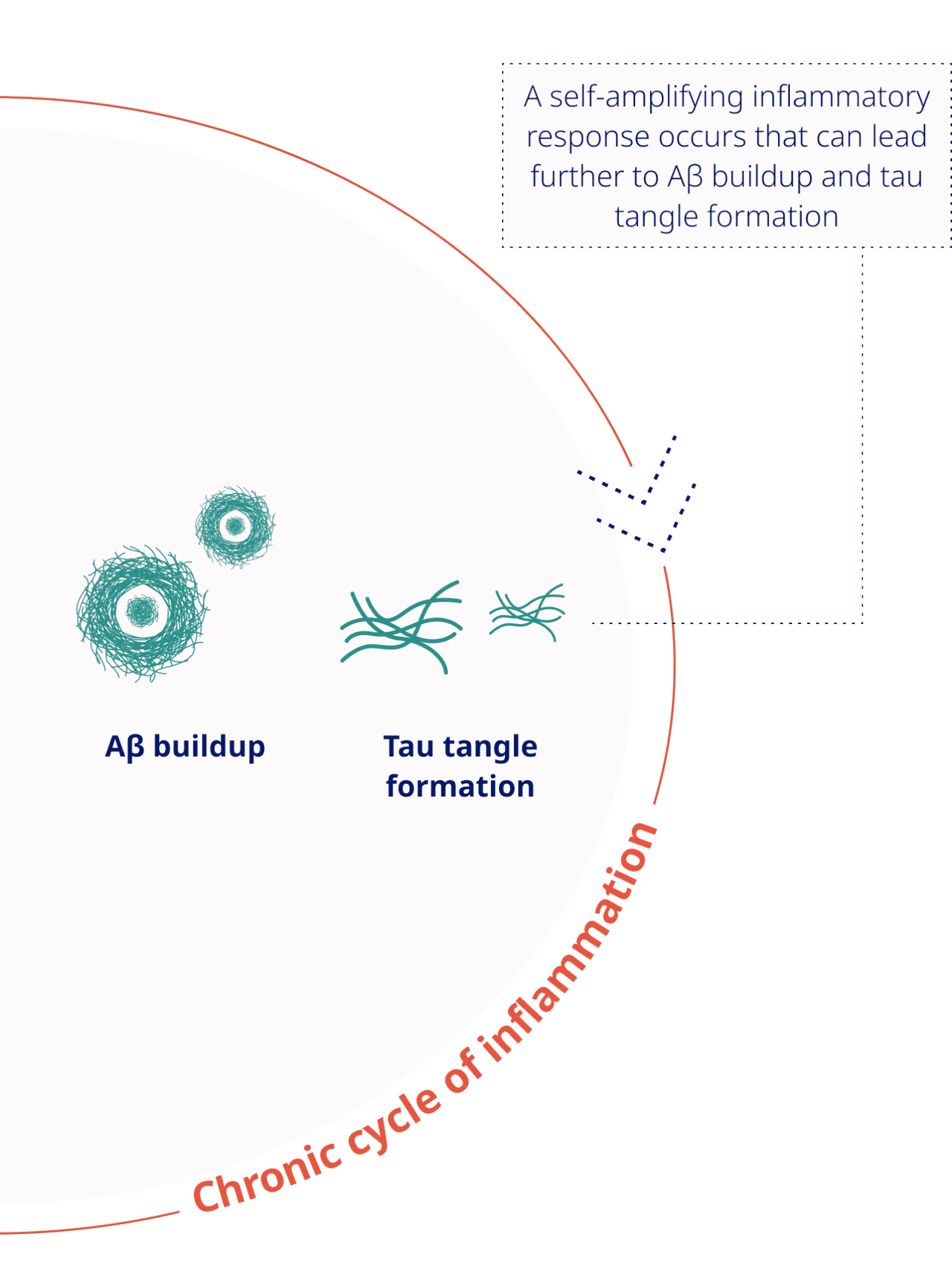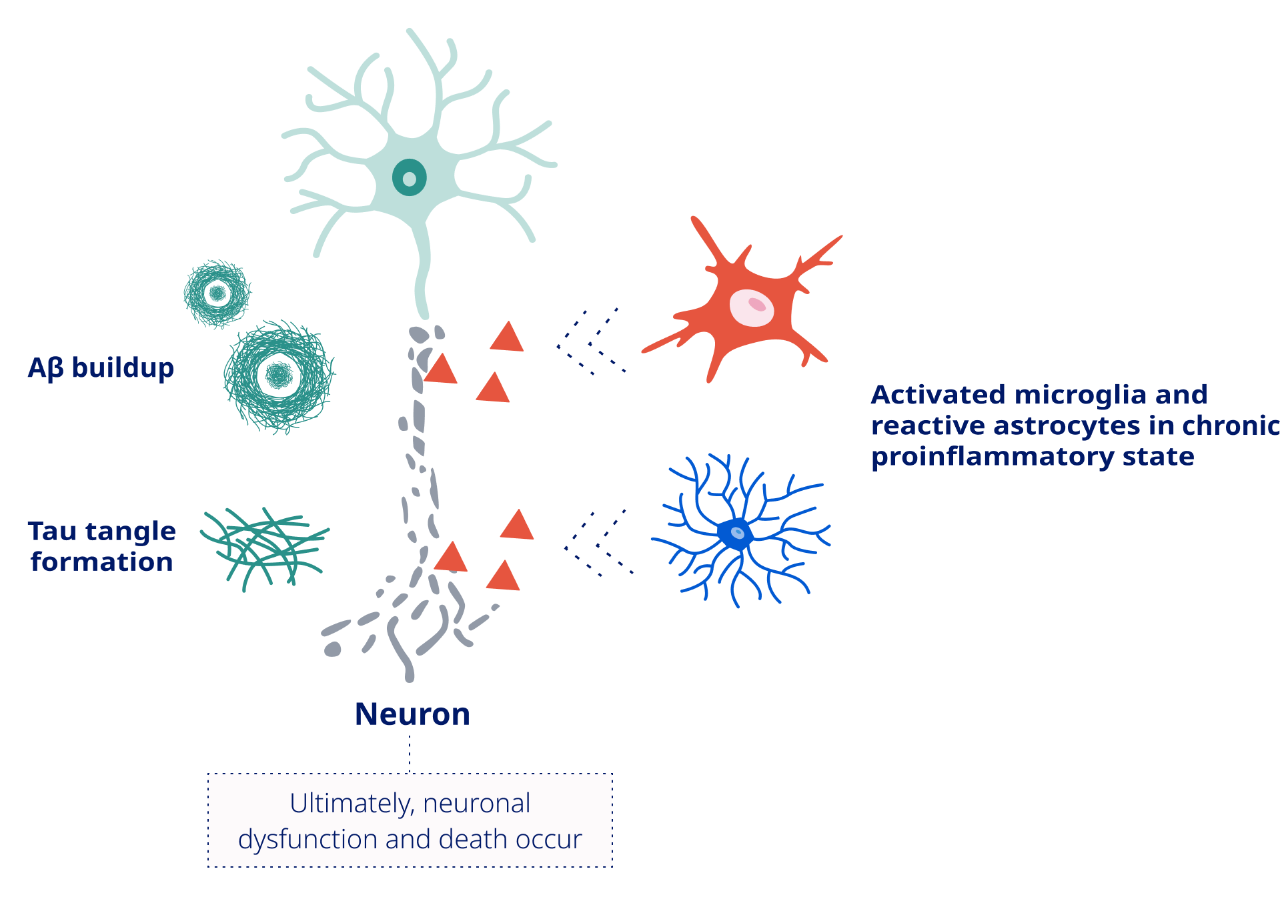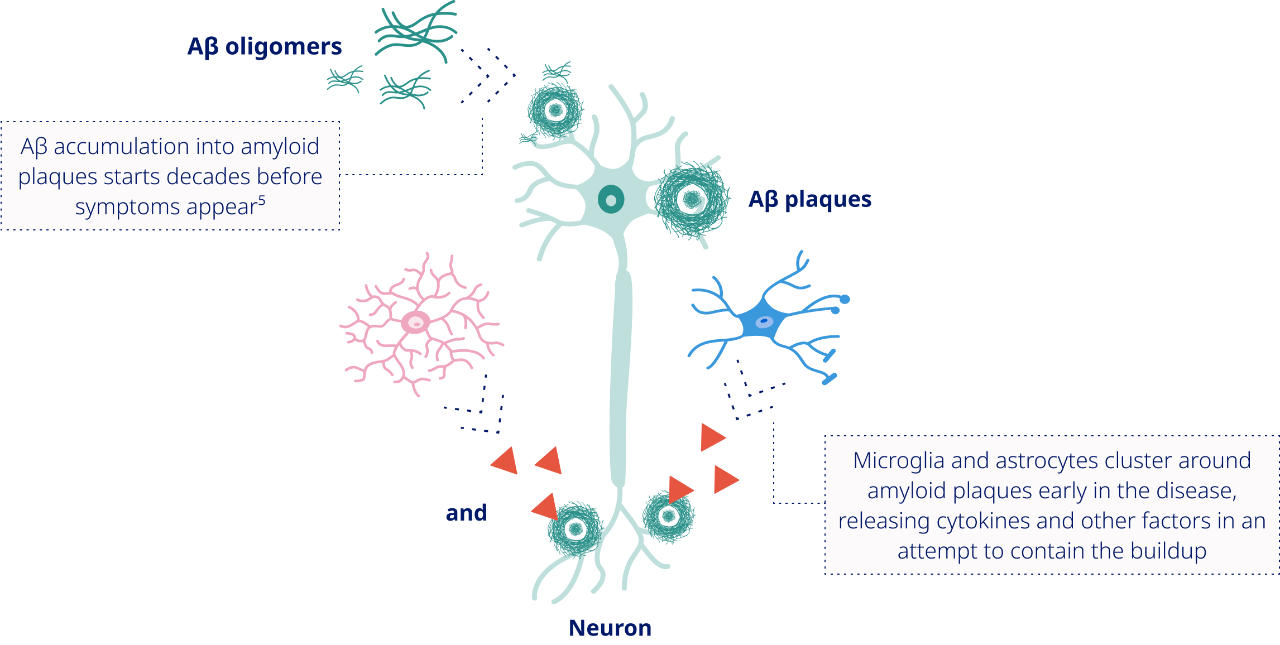THE SCIENCE
Originally considered merely a response to the aggregation of amyloid-β plaques and tau tangles, neuroinflammation is increasingly recognized as a contributing factor to Alzheimer’s disease (AD) pathogenesis and progression.1-3

// 089
EXPOSING A POTENTIAL DRIVER
Neuronal dysfunction and cell death can be caused by chronic neuroinflammation: A self-amplifying, maladaptive inflammatory response of the central nervous system that involves the chronic release of proinflammatory molecules.2,3
Multiple lines of scientific evidence support the role of neuroinflammation in the pathogenesis and progression of AD, including2,3:
- Elevated levels of inflammatory markers in patients with AD
- Mutations in genes associated with microglial or immune function, such as TREM2 or CD33, increase the risk for AD
- The close proximity of activated microglia to amyloid plaques, indicating the involvement of a neuroinflammatory response in disease process
- The temporal relationship between neuroinflammation and the two hallmark features of AD: Neuroinflammation occurs early in AD pathophysiology, triggered in part by the development of amyloid plaques, and precedes the formation of tau tangles
DID YOU KNOW?
Amyloid and tau are not the only potential drug targets in AD treatment. Investigative research targeting neuroinflammation in the early stages of AD is currently underway.3,4
A NEUROTOXIC CYCLE
A neuroprotective response turns into a neurotoxic cycle of inflammation3
Neuroinflammation appears to be one of the earliest events in Alzheimer’s disease (AD) pathology, when an initial attempt at clearance of accumulating debris turns into a self-amplifying, neurotoxic cycle.3
Discover how neuroinflammation builds over time2,3,5-7
PHASE 1
// Initial inflammatory response
PHASE 2
// Proinflammatory state

PHASE 3
// Neuroinflammation
becomes chronic and neurotoxic

PHASE 4
// Chronic neuroinflammation and neuronal death

// The activation of astrocytes and microglia may function as a molecular bridge that links Aβ accumulation to the development of tau tangles, underscoring the important role of neuroinflammation in the progression of AD.2,3,5,6
*Neurotransmitters, such as glutamate and nitric oxide.
Aβ, amyloid beta; CNS, central nervous system; MCI, mild cognitive impairment.
DID YOU KNOW?
Further research on the role of neuroinflammation in AD development could help identify novel markers of progression and potential therapeutic targets.2
PIPELINE RESEARCH
Neuroinflammation research is evolving in Alzheimer’s disease3
After decades of research focusing on amyloid plaques and tau tangles, efforts at developing new treatments have now expanded to novel targets with over 70% of drugs in the pipeline in 2024 assessing non-Aβ and non-tau targets.8
Researchers are expanding their focus to novel targets8
- In 2024, over 60% of drugs in phase 3 trials were disease-modifying therapies targeting diverse molecular pathways8
- As neuroinflammation is becoming a more accepted component of AD pathogenesis, more research is happening to target it as a pathway8
// 063
CLINICAL STUDIES UNDERWAY
In 2024, twice as many drugs in phase 3 trials were targeting neuroinflammation as there were targeting tau.8
You could play a pivotal role in diagnosing AD and creating a treatment plan to help delay progression—changing the lives of patients, care partners, and loved ones impacted by this devastating disease.3,9
Are you ready to help change the future of AD care?
GET IMFORMATION
Stay informed on AD.
Discover the first step to early diagnosis
See how multiple different mechanisms could be driving AD pathophysiology1,10-12
- Hampel H, Hardy J, Blennow K, et al. The Amyloid-β Pathway in Alzheimer’s disease. Mol Psychiatry. 2021;26(10):5481-5503.
- Zhang W, Xiao D, Mao Q, et al. Role of neuroinflammation in neurodegeneration development. Sig Transduct Target Ther. 2023;8(1):267.
- Leng F, Edison P. Neuroinflammation and microglial activation in Alzheimer disease: where do we go from here? Nat Rev Neurol. 2021;17(3):157-172.
- Kiraly M, Foss JF, Giordano T. Neuroinflammation, its role in Alzheimer’s disease and therapeutic strategies. J Prev Alz Dis. 2023;10(4):686-698.
- Bellaver B, Povala G, Ferreira PCL, et al. Astrocyte reactivity influences amyloid-β effects on tau pathology in preclinical Alzheimer’s disease. Nat Med. 2023;29(7):1775-1781.
- Heneka M, Kummer MP, Latz E. Innate immune activation in neurodegenerative disease. Nat Rev Immunol. 2014;14(7):463-477.
- Alzheimer's Association. 2025 Alzheimer's Disease Facts and Figures. Accessed May 22, 2025. https://www.alz.org/getmedia/ef8f48f9-ad36-48ea-87f9-b74034635c1e/alzheimers-facts-and-figures.pdf
- Cummings J, Zhou Y, Lee G, Zhong K, Fonseca J, Cheng F. Alzheimer’s disease drug development pipeline: 2024. Alzheimer’s Dement. 2024;10(2).
- Alzheimer’s Association. 2024 Alzheimer’s Disease Facts and Figures. Accessed May 22, 2025. https://www.alz.org/getmedia/c65b6229-48cf-4a7b-a447-328fdf05e35d/alzheimers-facts-and-figures-2024.pdf
- DeTure MA, Dickson DW. The neuropathological diagnosis of Alzheimer’s disease. Mol Neurodegener. 2019;14(1):32.
- Zhang J, Zhang Y, Wang J, Xia Y, Zhang J, Chen L. Recent advances in Alzheimer’s disease: mechanisms, clinical trials and new drug development strategies. Sig Transduct Target Ther. 2024;9(1):211.
- Calabrò M, Rinaldi C, Santoro G, Crisafulli C. The biological pathways of Alzheimer disease: a review. AIMS Neurosci. 2021;8(1):86-132.




